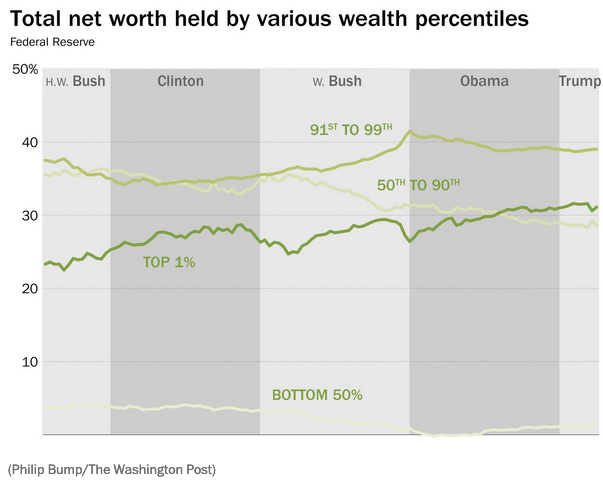The distribution in wealth in the United States is shaped like a curve. Middle-tier households have slightly more wealth than the poorest. Wealthier Americans have significantly more than the middle, but as wealth increases, so does the gap between the haves and the have-a-little-lesses. Eventually we reach that upper tier of the “1 percent” made famous by the Occupy Wall Street movement — though even that group pales next to the 0.1 percent, and so on.
One result of this geometric progression of wealth is that the richest Americans end up holding a lot more wealth than poorer ones. We can visualize this easily, thanks to data compiled by the Federal Reserve published on its data platform this month.
Here is the total net worth of the United States held by four tiers of households: Those in the bottom 50 percent of households, those in the 50th to 90th percentiles, those in the 90th to 99th percentiles, and then the top 1 percent.
That last group holds about 30 percent of the country’s net worth. The bottom 50 percent? Almost none.
Read full article




